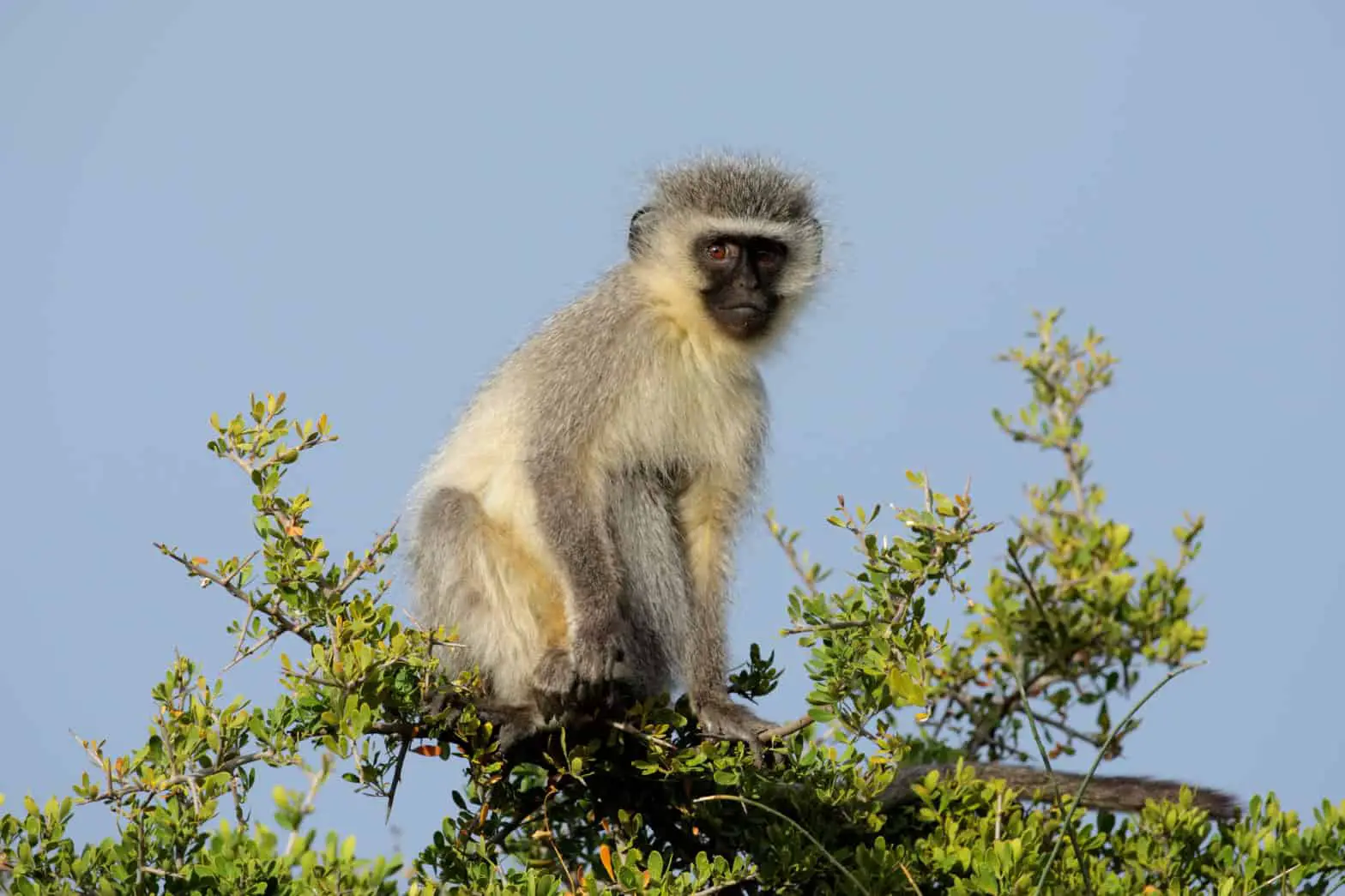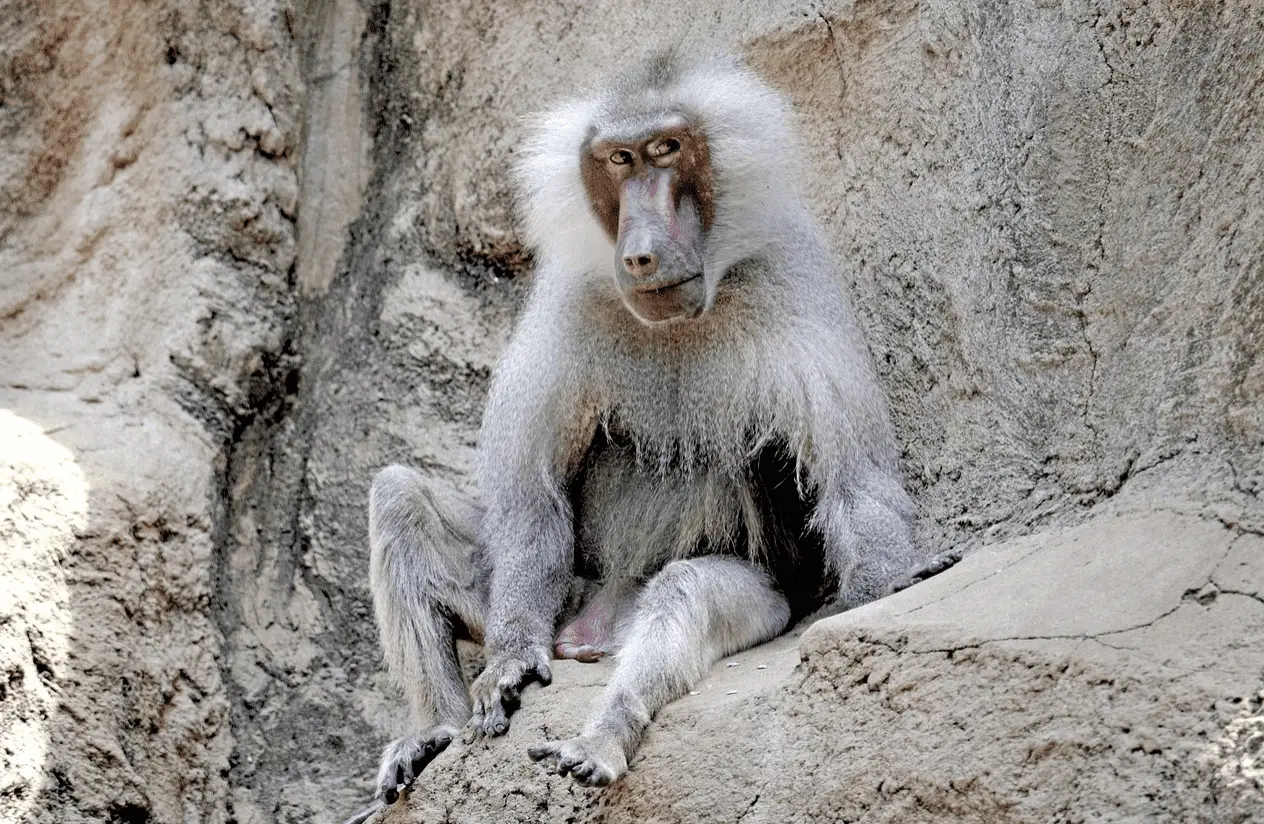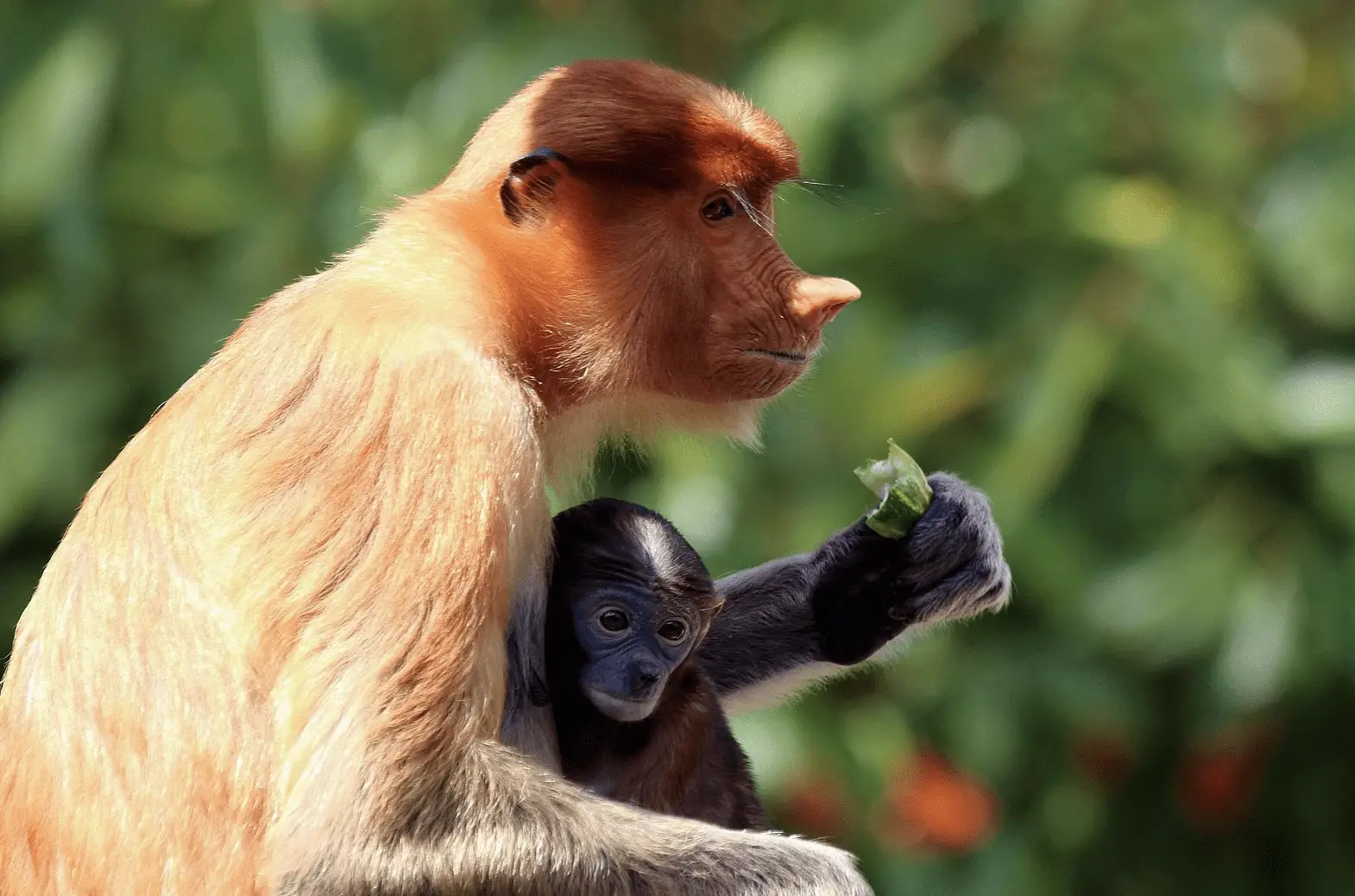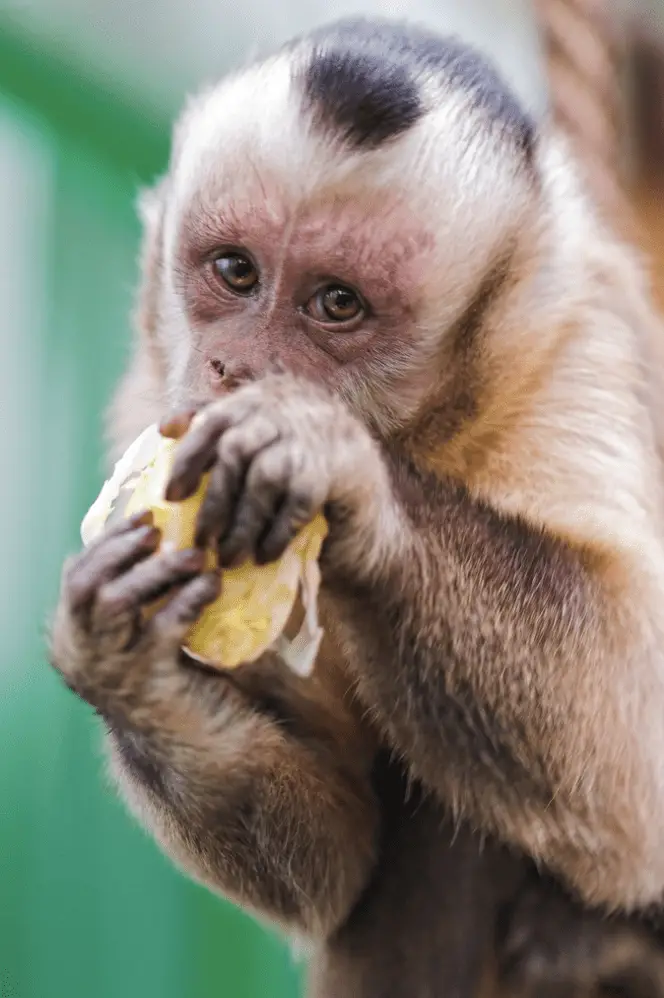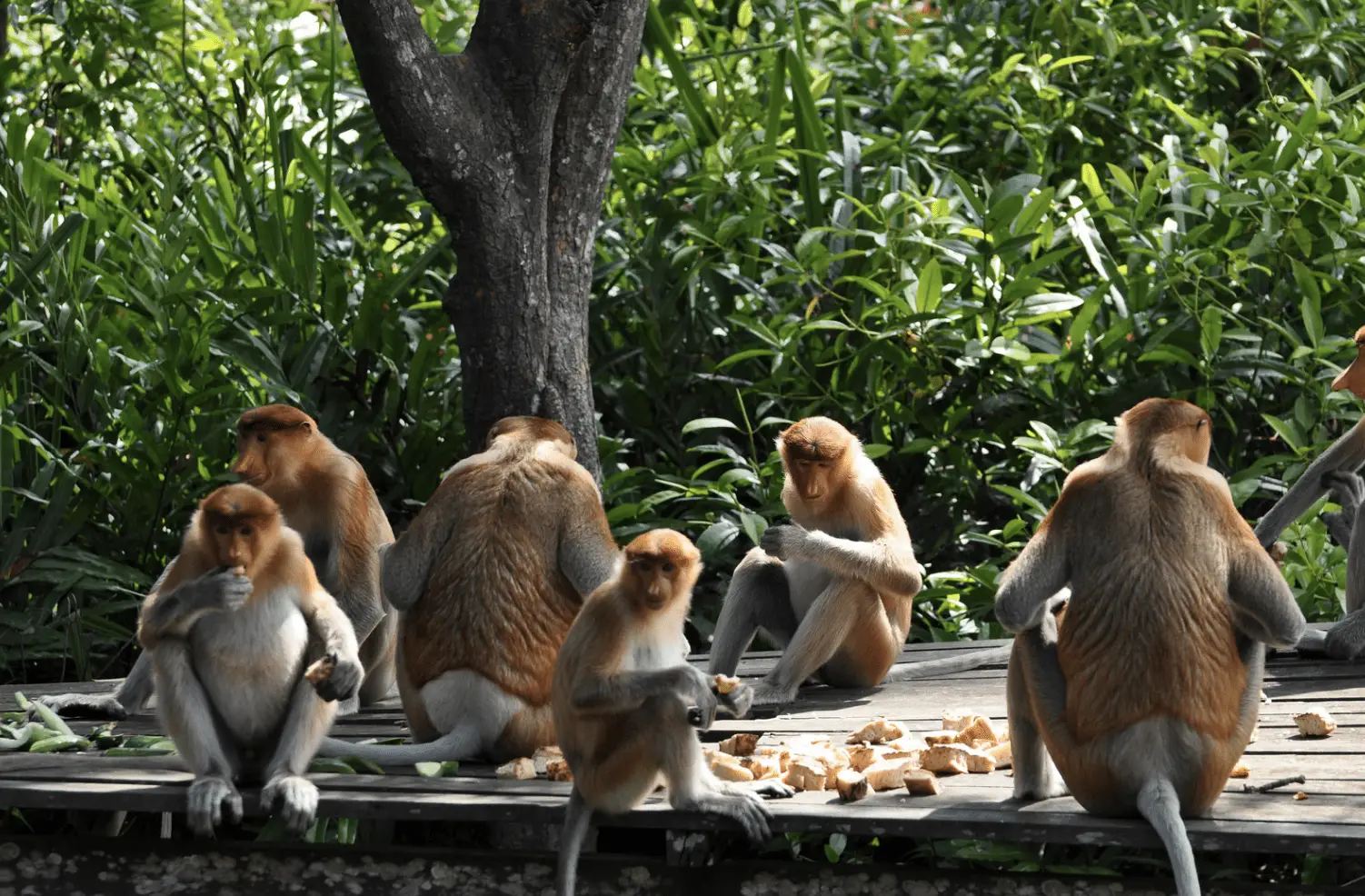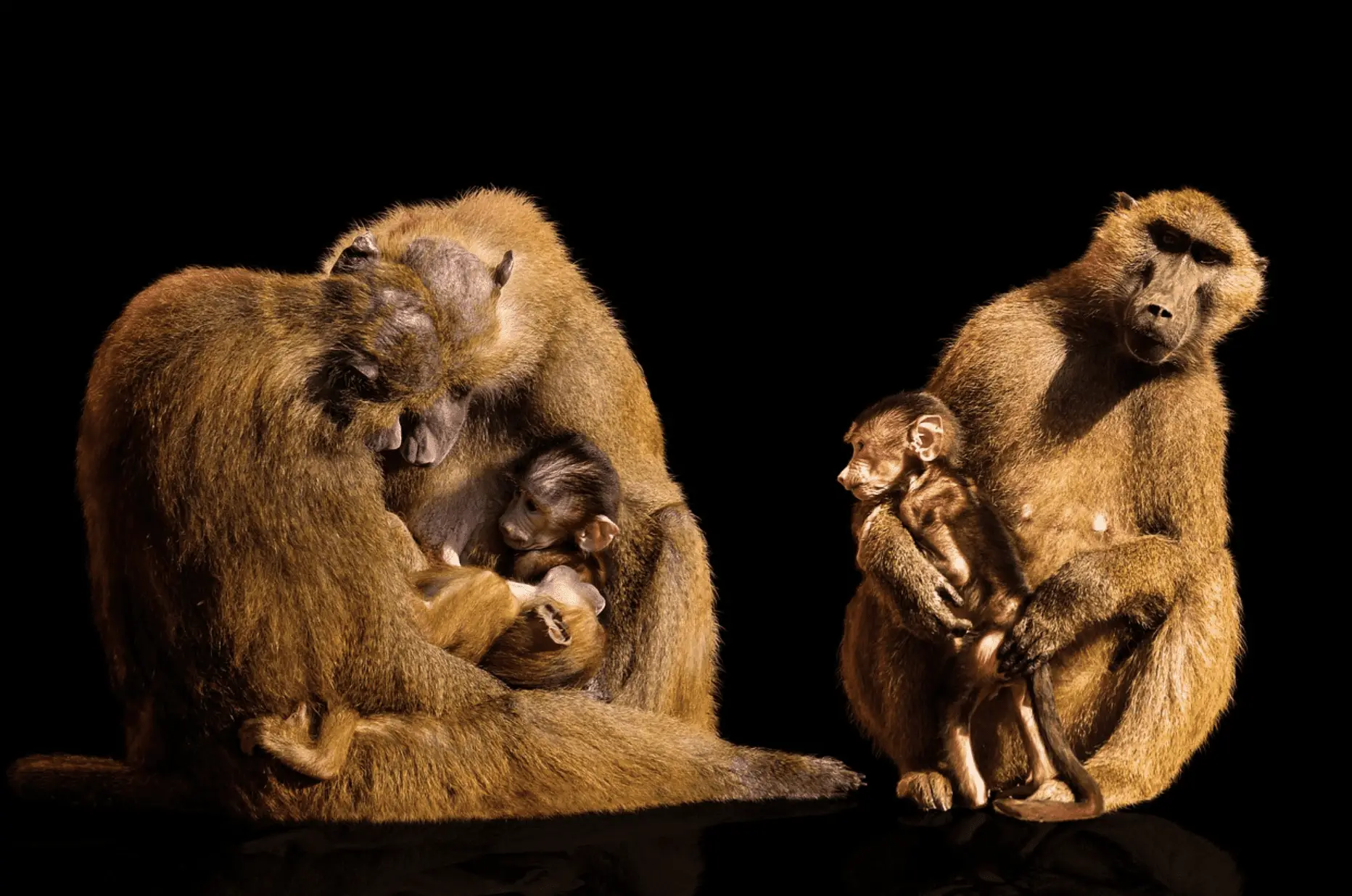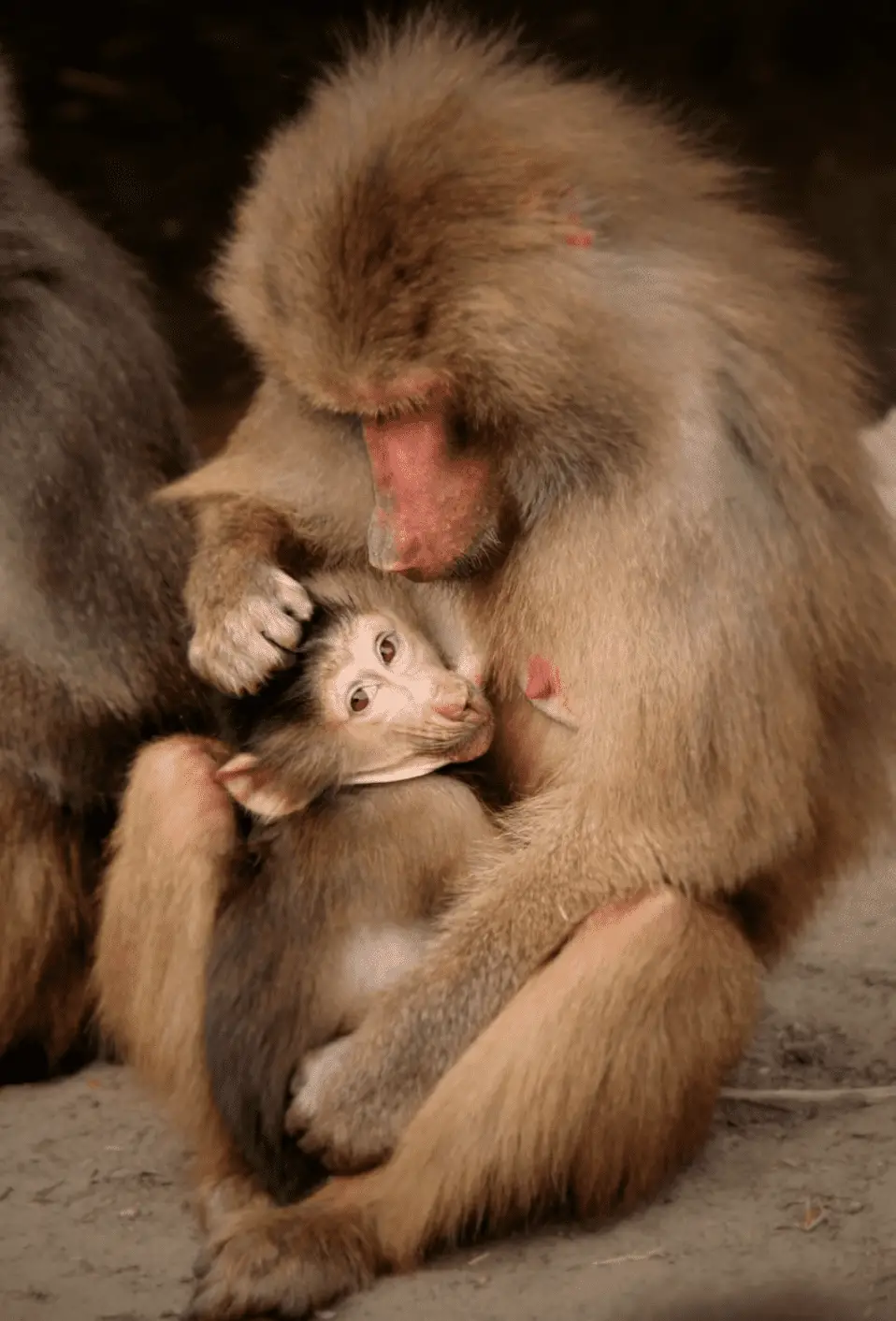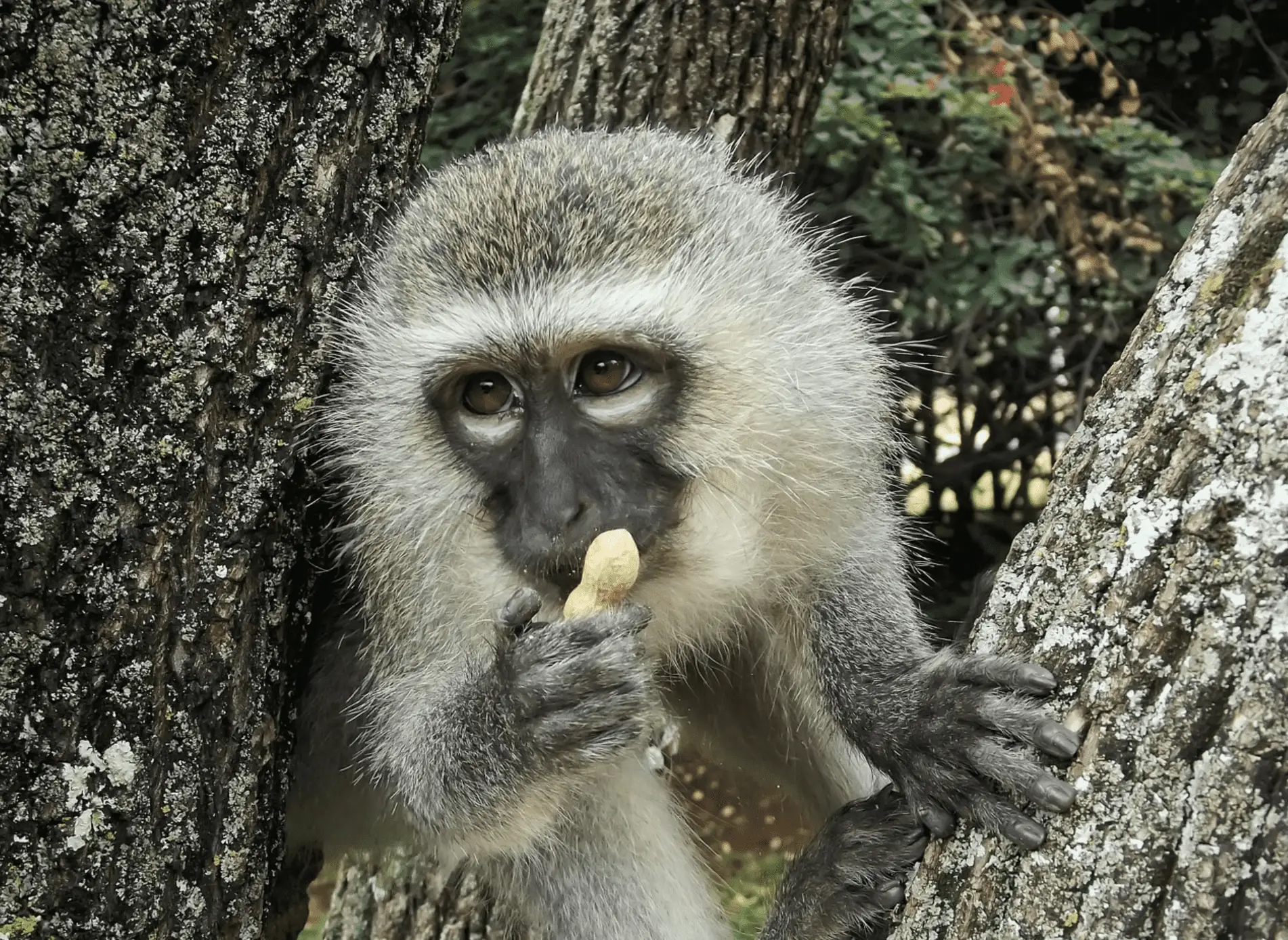Table of Contents
*This post may contain affiliate links. As an Amazon Associate we earn from qualifying purchases.
An Old World primate, the vervet monkey lives in the southeast regions of Africa. It sports a black face surrounded by a white fringe with various shades of grey to the reddish-green fur on the body. They are also known as the green or grivet monkey and have five subspecies: Wittu Islands vervet, Pemba vervet, reddish-green vervet, Hilgert’s vervet and black-chinned vervet.
1. Vervet monkeys have commonalities with humans
The vervet monkey is a great example of a primate that mirrors some human genetics and communal aspects in their lives. They suffer from high blood pressure and uneasiness from stress as well as the use and abuse of alcohol. This has made them valuable in research. Their social structure and interactions within their “friend” circles and family units have provided much information on these monkeys.
2. Males and females are physically different
Male Monkey
Female Monkey
The vervet monkey exhibits sexual dimorphism in that the males are larger and heavier than the females. The average male weighs 12 pounds, has a body length of 17 – 25 inches and a tail length of 20 – 28 inches long. The average female weighs 9 pounds with a body length of 12 – 20 inches and a shorter tail. The male has strikingly colored genitals; their scrotum is a bright blue. Both sexes have long arms that are close to the length of their legs and walk on all fours. Vervet monkeys spend most of their time in trees but head to the ground to forage for food.
3. Vervet monkeys are omnivores
Flowers, fruit, leaves, seeds, roots, grasses and herbs make up much of their diet, but they also consume insects, small mammals, baby birds, eggs, crustaceans, and lizards. These monkeys have pouches in their mouths where they can store food to be eaten later. They normally look for food during the day and sleep in trees at night. Newborns drink their mother’s milk and begin with solid food at around four months of age. They continue with milk for their first year.
When in close proximity to man, vervet monkeys have been known to eat farm crops and steal food. This often leads to them being looked upon as pests. Even so, many locales have laws against harming them, even though they are not endangered.
4. Males leave the group when they reach maturity
Vervet monkeys live in groups ranging in size from 10 to 70 members. As males reach maturity, they separate from their troop and move to an adjacent tribe. This migration often occurs with two brothers leaving, which is believed to be for safety from the new troop’s members. Females stay within their group from birth.
5. Hierarchies are different between the males and females
Female hierarchy is dependent on mothering and producing offspring. Newborns are highly regarded in the troop, with all members acknowledging them in a supportive manner. Females that rear a greater number of infants gain respect and sit at the top of the female hierarchy. Younger females look to interact and help with managing newborns more often if the mother has a high rank.
Male hierarchy is dependent on a number of factors. Fighting ability, allies, and age are the most important elements in determining their status in the group. Scientists studying the vervet monkeys’ social structure have observed that members that are closely ranked have the most interactions, as well as family members.
Monkeys that are lower in rank are more likely to be set upon by upper echelon members. Families tend to stick together and will help out if one is attacked. The lower members have less access to resources such as food, which might lead to aggression. The opposite is true for lower females who often help with raising the upper ranks’ infants. They seek to better themselves and cultivate relationships with the higher-level monkeys. This may allow them more access to resources and helps teach them about raising an infant.
6. Relationships are often family-based
As the vervet monkey matures, it most often interacts with siblings. These relationships are normally kind and good-natured. The growing brothers and sisters encourage each other as they learn about the world around them. There are rivalries for attention from the mother in grooming and other matters, but these are mild and not hostile. On a playful note, the young wrestle with each other and often tussle among the branches, which helps them improve their balance and stability while aboveground.
Beyond the hierarchy with respect to aggression, there is a familial response to an antagonist. If a monkey is aggressive toward another, there is often a response from family members as well as friends of the family. If the aggressor is a low-ranking member of the troop, he or she will face greater payback than if the offending member were of high rank.
Another familial bond is that of mother and infant. The entire troop recognizes the importance of the newborn. This engenders allowing the mother to focus on and nurture the baby and gives her points in terms of her rank in the hierarchy. There is also the process of allomothering, where another female, often one who has not matured, helps in rearing the infant. In many cases, this is a sibling. An allomother can help reduce the amount of time between births by freeing up the mother. Further, the allomother learns child-rearing skills, which increases the odds of her being successful and ascending the ranks.
Other than the mother, the grandmother also plays a role in rearing the young. It has been shown that young vervet monkeys are more likely to seek out their grandmother, second only to their mother. Higher-ranked grandmothers are more likely to spend time with their grandbabies than lesser-ranked members are. There is also less chance of death for a newborn in cases where the grandmother spends time helping.
7. Calling out danger
One of the more studied areas of vervet monkey society is their alarm calls. They have a number of predators, including crocodiles, baboons, large cats, predatory birds, and snakes. For each predator, the monkeys have a specific alarm, which includes shrieking, whistling, screeching and other warning signals. There have been as many as 36 distinct danger calls identified.
The young vervet monkey learns how to signal instinctively and without guidance from an older monkey. The reliability from troop member to troop member varies. It has been observed that less reliable danger calls made by a certain monkey get a lesser response from the troop. Even so, these calls are distinguishable. An unreliable call by a monkey for one predator will elicit one response, but if the call is for another predator, the response is normal. This suggests that the group not only can distinguish between the caller, but they can also judge between the signals. Research has further found that members of one troop can distinguish between calls from members of other groups. In other words, they are able to tell who the caller is even if they are outside of their troop.
The vervet monkeys can also distinguish whose baby is making noise, and which one. The mothers respond to their newborn calling out, and others in the troop instinctively look toward the mother when an infant cries. A mother will often go to her infant or child when it is in distress by protecting or helping it, but not with another’s offspring. Siblings exhibit similar patterns of behavior.
8. Reproduction
Vervet monkeys normally have one newborn at a time, but on occasion, they might have two infants. Males reach maturity at around 5 years of age while the females mature between 2 ½ and 4 years. The gestation period is approximately 5.5 months with breeding happening in April, May or June. Thus, most infants are born in September, October, November or December, and occasionally as late as February. The newborn often has a light red face with dark fur and normally weighs between 10 and 14 ounces. They spend their first week clinging to their mother’s stomach.
These primates do not exhibit fancy mating rituals. As previously mentioned, newborn monkeys are highly regarded and females that give birth more often get a higher rank. Having an allomother helps increase the rate of breeding, helping the mother to climb the hierarchy.
9. The vervet monkey lifespan
In the wild, these primates live around 12 years. They have been known to live up to 30 years in captivity. The vervet monkey is not considered endangered.
10. Not such a fun fact
In 1967, scientists studying vervet monkeys in Marburg, Germany were exposed to what is now called Marburg or Vervet Monkey disease. This hemorrhagic virus infected 25 workers. The virus causes skin ruptures, diarrhea, high fever, body pain and headache and it may lead to blood hemorrhage and death. Seven of the researchers died after bleeding out. The CDC can test for this disease. As of 1975, it is illegal to import monkeys for any use other than research.
The Vervet Monkey
Having many human-like traits, the vervet monkey is an interesting creature. This Old World primate has adapted to living with man in many places, and will hopefully be around playing among the trees for many years to come.

